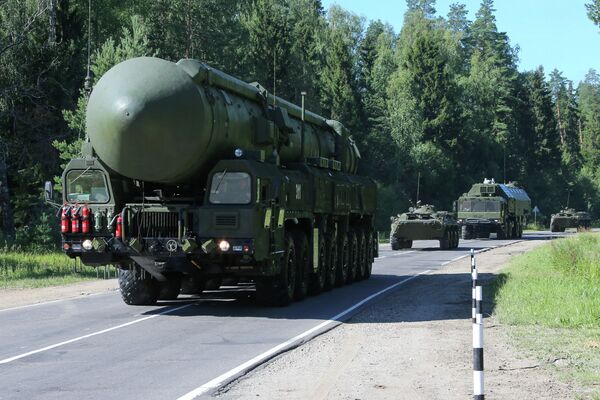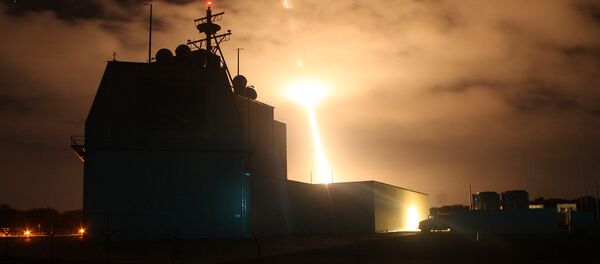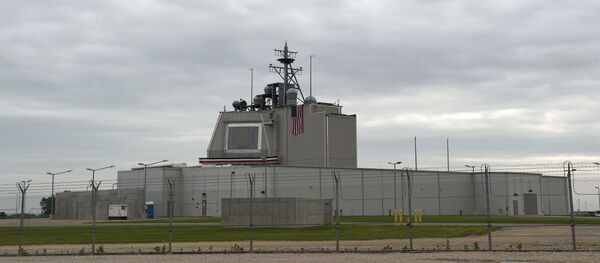Late last week, commenting on the Washington's deployment of the new Aegis Ashore missile defense system at the Deveselu military base in Romania, Zakharova said that "what we see from our Western partners cannot be called a betrayal, because a betrayal is only possible from one's close friends. These were nefarious steps – the violation of agreements…Considering how this situation is developing, we of course reserve the right to respond."
Earlier, Russian President Vladimir Putin said that the system being deployed in Romania was clearly not a defensive complex, but part of the US's strategic nuclear capability. "Now, after the deployment of those anti-missile system elements, we'll be forced to think about neutralizing developing threats to Russia's security," Putin said.
NATO General Secretary Jens Stoltenberg attempted to calm Moscow's weariness over the $800 million facility by suggesting that the system was "exclusively defensive," and could not be used for offensive purposes "even if we wanted to."
Meanwhile, Deputy Secretary of Defense Robert Work went further, saying the defense shield was really aimed against Iran, not Russia. "As long as Iran continues to develop and deploy ballistic missiles, the United States will work with our allies and partners to defend against this threat," Work said, speaking at a groundbreaking ceremony for another Aegis Ashore ballistic missile defense site being built in Redzikowo, Poland. That system is expected to become operational in 2018.

Theoretically, the Romanian missile defense complex by itself is not expected to present a threat to the strategic balance. However, as Mikhail Ulyanov, the director of the Foreign Ministry's Department for Non-Proliferation and Arms Control emphasized, it is impossible to determine when the US and NATO will consider the level of security in Europe to be 'sufficient'.
Furthermore, according to Russia's permanent NATO representative Alexander Grushko, Moscow remains very concerned about the possibility of the US rapidly converting the missile systems to provide them with offensive capabilities, something entirely possible given the nature of the launchers being deployed. "By deploying the MK-41 universal launchers, capable of launching medium-range missiles, at the Aegis Ashore facilities, the US is seriously undermining the Treaty on Intermediate-Range Nuclear Forces (INF)," Grushko said.
Just how grave is the threat, and how can Russia adequately respond? For answers to these questions, independent Russian online newspaper Svobodnaya Pressa turned to Russian military expert Viktor Murakhovsky.
Speaking to the paper, Murakhovsky, a member of Russia's powerful Military-Industrial Commission, explained that the biggest danger lies in the fact "that the US missile defense systems are deployed on the MK-41 vertical launching system, which the US Navy has used for many years to launch its Tomahawk cruise missiles."
"Under the INF Treaty of 1988, signed by the Soviet Union and the United States, the signatories pledged not to produce, test or deploy ground-based missiles like the Tomahawk; they were limited to air and sea use. But in fact, the medium-range missiles used by the navy are no different, apart from their launch platform, from their ground-based counterparts. Therefore, the deployment of US Tomahawk launchers in Europe really is a threat to the Russian Federation."
"But just around the corner is the Block 2A modification. And these interceptor missiles can create a potential threat. We know that such missiles are still under development, and the Americans plan to equip their first Aegis Ashore facility in Poland with them, and then the other land and sea-based systems."
"Theoretically at least," the official underlined, "Block 2A missiles could pose a threat to the potential of missiles in European Russia."
Recently, Russian Strategic Missile Forces commander Sergei Karakaev emphasized that US missile defense does not currently threaten Russia's strategic nuclear capability. This, according to Murakhovsky, is due at least in part to Russia's long-term development of new, missile defense-defeating missile systems.
"We know that our Yars mobile missile systems, already in production, and the Yars-M, which is undergoing testing, as well as the promising [RS-28] Sarmat ICBM, are equipped with systems allowing them to defeat missile defense. In this sense, our plans to counter US missile defense are nothing new…"

"It's another issue entirely that with the emergence of these Aegis Ashore systems in Europe, there is a 100% guarantee that they will be targeted by Russian missiles." These weapons, the analyst explained, will likely include "the Kalibr sea- and air-based medium-range cruise missiles recently demonstrated in Syria."
"Finally, we have systems of electronic warfare, both ground and air-based variants. These are capable of neutralizing the reconnaissance and management capabilities of active phase array antenna-based radar, located in Romania and Poland at the American sites."
"In other words," Murakhovsky noted, "the spectrum of options to counter the US is sufficient. But my personal opinion as an expert is that Russia should withdraw from the INF Treaty, since from a military-technical point of view it is worthless, and not worth the paper it is written on."
This, the analyst said, has to do with the fact that INF places no limitations on sea- and air-based cruise missiles, at that same time "that we see the deployment of US and NATO formations with cruise missiles on board in the Mediterranean, the Baltic Sea, the Barents Sea and the North Sea, along with periodic visits of ships to the Black Sea. We need to understand that with the help of such missiles, the US and its allies cover the entire European part of Russia."
What's more, "we see the placement of NATO aircraft on a rotational basis at air bases in the Baltic states. What good is the INF Treaty when the flight time of a combat aircraft from the airfield at Amari, Estonia to St. Petersburg is only about 10 minutes?"
"I'll put it this way," the analyst noted. "[If Russia were to develop these new intermediate range systems], it would be enough to have several pairs of missile brigades equipped with such weapons in our western and eastern military districts to temper [NATO's] current zeal; perhaps not enough to get them to cease indulging themselves entirely, but at least to get them to think about what they're doing."
During the signing of the INF Treaty, Murakhovsky served in the Group of Soviet Forces in Germany. "So I remember very well the massive anti-American demonstrations taking place in the West at the time. It was under this pressure that Washington agreed to the treaty. And the reason for the protests was very simple: it's not pleasant to live knowing that you are in someone's crosshairs." Today, it may be time to remind Washington's Eastern European allies of this fact, the analyst concluded.








